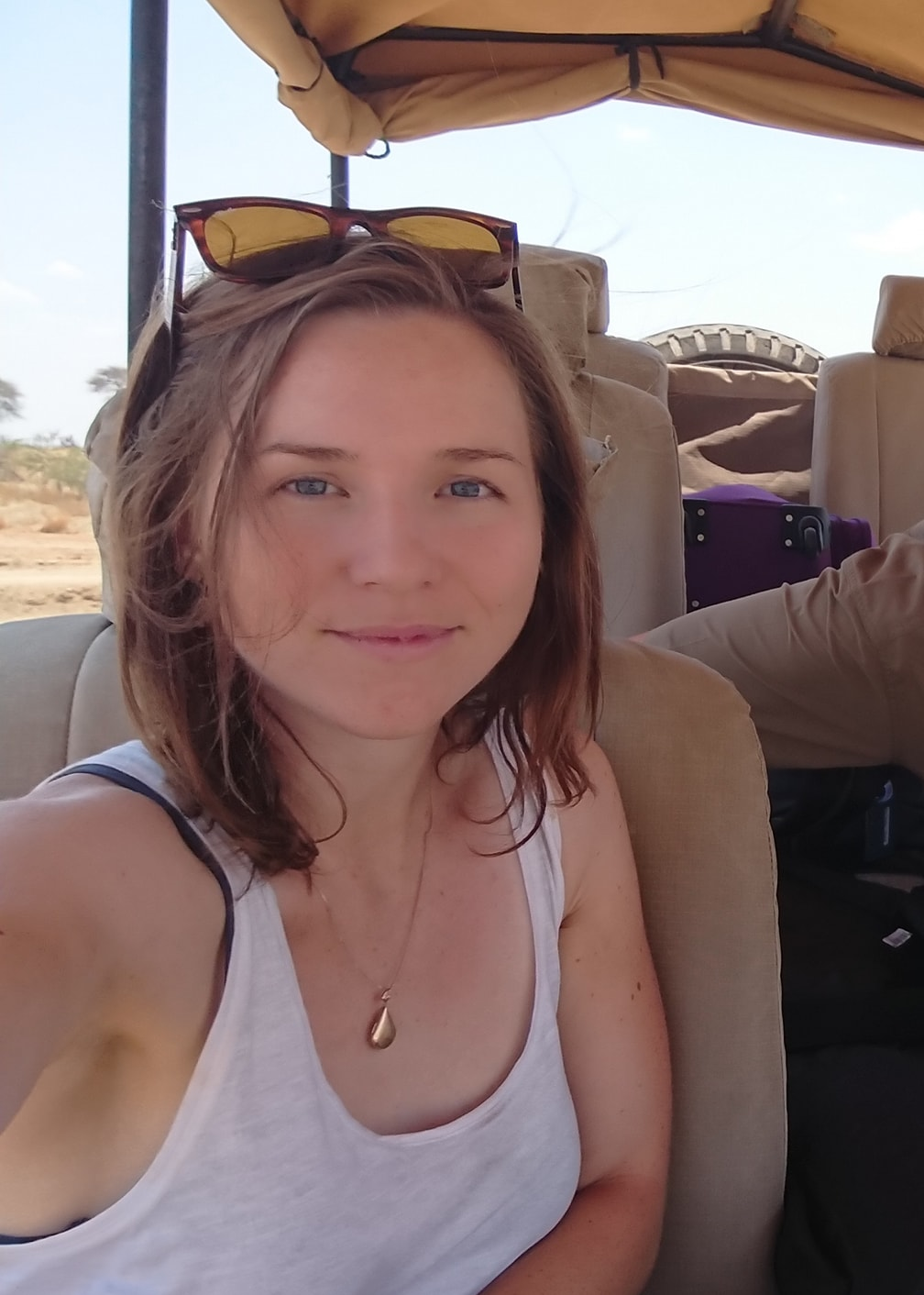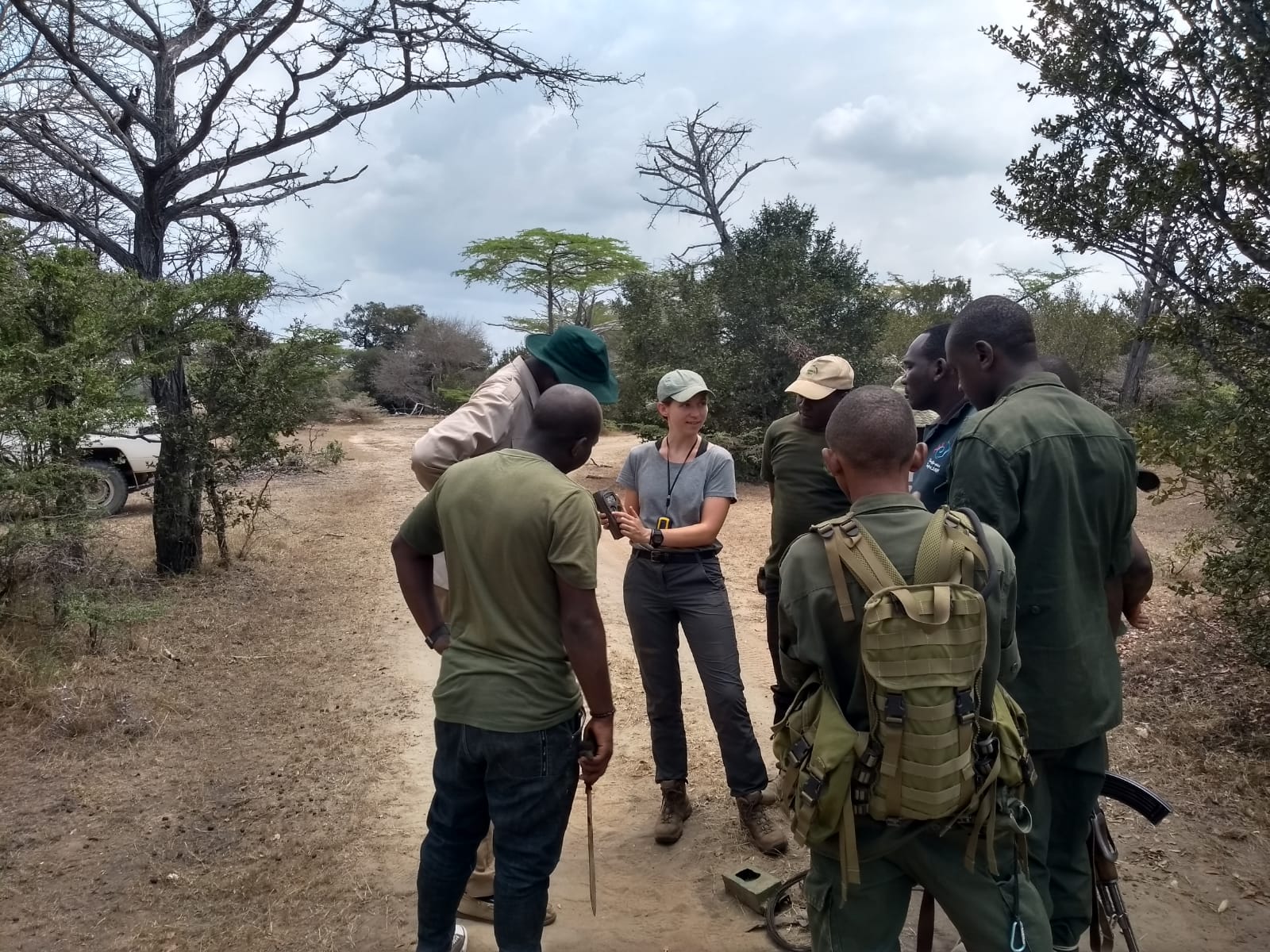Dr Charlotte Searle
Research Staff
I joined WildCRU in 2017 with a scholarship from the NERC Doctoral Training Partnership in Environmental Research, and completed my DPhil in early 2021. My thesis research explored the status and ecology of African leopard across mixed-use landscapes, with the aim of informing population monitoring and conservation management for the species. My research focused on the southern KAZA Transfrontier Conservation Area across Botswana & Zimbabwe and the Ruaha-Rungwa landscape in Tanzania, two landscapes that are thought to be major strongholds for leopard in its remaining African range.
A major part of my DPhil research saw me conducting a series of camera trap surveys in Ruaha-Rungwa, in collaboration with the Ruaha Carnivore Project (RCP) and Southern Tanzania Elephant Program (STEP). This work was supported by grants from National Geographic Society Early Career Grants, Cleveland Metroparks Zoo Africa Seed Grants, Chicago Zoological Society Chicago Board of Trade (CBOT) Endangered Species Fund, Pittsburgh Zoo & PPG Aquarium Conservation & Sustainability Fund, and Pembroke College Pier Giorgio Frassati Scholarship & Melandra Castle Trust Prize.
Since 2020, I have been coordinating large carnivore surveys across southern Tanzania’s Selous-Nyerere landscape as a Senior Researcher with Lion Landscapes. These surveys will help shed light on the lion, leopard, spotted hyaena and African wild dog populations in this globally-important ecosystem, and feature a strong training component to help build capacity among management staff.
In 2022, I was awarded a postdoctoral fellowship with WildCRU as part of the Dennis Curry Conservation Science Programme. Through this post, I will be working with Lion Landscapes to continue our research and capacity-building activities in southern Tanzania with the support of a Darwin Capability & Capacity grant, and will continue carrying out research to better understand Tanzania’s large carnivores and how we can conserve them into the future.
Prior to joining WildCRU, I graduated from the University of Cambridge in 2013 with a degree in Natural Sciences specialising in Zoology, for which I was awarded the Godwin Prize for Life Sciences. I then spent three years in the insurance industry, working as an Emerging Risks Researcher at Lloyd’s of London and a Catastrophe Modeller at Willis Re. In 2016, I returned to academia as a research assistant for a project studying black howler monkeys in Mexico’s Palenque National Park.
Website: https://www.lionlandscapes.org/
Google Scholar: https://scholar.google.com/citations?hl=en&user=Dq239E4AAAAJ
Researchgate: https://www.researchgate.net/profile/Charlotte-Searle-4
Selected Publications
Searle, C.E., Bauer, D.T., Kesch, M.K., Hunt, J.E., Mandisodza-Chikerema, R., Flyman, M.V., Macdonald, D.W., Dickman, A.J., and Loveridge, A.J. (2020). Drivers of leopard habitat use and relative abundance in Africa’s largest transfrontier conservation area. Biological Conservation. https://doi.org/10.1016/j.biocon.2020.108649
Searle, C.E., Smit, J., Strampelli, P., Mkuburo, L., Ikanda, D., Macdonald, D.W., Loveridge, A.J. and Dickman, A.J. (2021). Leopard population density varies across habitats and management strategies in a mixed-use Tanzanian landscape. Biological Conservation. https://doi.org/10.1016/j.biocon.2021.109120
Searle, C.E., Cusack, J.J., Smit, J., Strampelli, P., Grau, A., Mkuburo, L., Macdonald, D.W., Loveridge, A.J. and Dickman, A.J. (2021). Temporal partitioning and spatiotemporal avoidance among large carnivores in a human-impacted African landscape. PLOS ONE. https://doi.org/10.1371/journal.pone.0256876
Searle, C.E., Kaszta, Ż., Bauer, D.T., Kesch, M.K., Hunt, J.E., Mandisodza-Chikerema, R., Flyman, M.V., Macdonald, D.W., Dickman, A.J., Loveridge, A.J., and Cushman, S.A. Random forest modelling of multi-scale, multi-species habitat associations within KAZA transfrontier conservation area using spoor data. Journal of Applied Ecology, in press.
Strampelli, P., Searle, C.E., Smit, J., Grau, A., Henschel, P., Lobora, A.L., Mitchell, N., Macdonald, D.W., and Dickman, A.J. (2021). Insights into the status and distribution of cheetah in an under-studied potential stronghold in southern Tanzania. African Journal of Ecology. https://doi.org/10.1111/aje.12850
Strampelli, P., Searle, C.E., Smit, J., Henschel, P., Ikanda, D., Macdonald, D.W., and Dickman, A.J. (2022). Camera trapping and spatially explicit capture–recapture for the monitoring and conservation management of lions. Ecological Solutions and Evidence. https://doi.org/10.1002/2688-8319.12129
Strampelli, P., Henschel, P., Searle, C.E., Macdonald, D.W., and Dickman, A.J. Multi-scale habitat use of an intact large carnivore guild and their prey in a modern mixed-use African landscape. Conservation Biology, in press.
Hardouin, M., Searle, C.E., Strampelli, P., Smit, J., Dickman, A.J., Lobora, A.L., and Rowcliffe, M. (2021). Density responses of lesser-studied carnivores to habitat and management strategies in southern Tanzania’s Ruaha-Rungwa landscape. PLOS ONE. https://doi.org/10.1371/journal.pone.0242293







